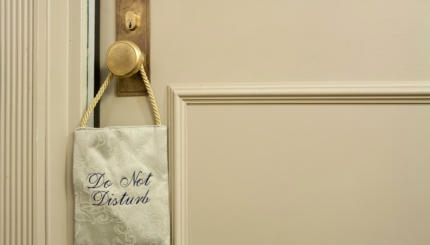By now, if you are reading this, you undoubtedly have been inundated with punditry about the meaning of the Pew Research Center Survey of U.S. Jews. Many scholars and institutional players immediately bemoaned the results as confirmation of the decline or degradation of American Jewry. Others have dismissed the data as either flawed (based on its use of comparison with the widely discredited 2000 NJPS survey) as drawing causal conclusions where mere correlations are suggested, or as too macro to represent the specifics of an individual Jewish community. Still others have seen positives in the data, whether due to the opportunity to reach out to Jews who reject denominational affiliations, the surprisingly large percentage of Jews who express faith in God, or because of the incredible 94% of Jews who express pride in being Jewish.
This latter point truly is revolutionary. Growing up as a Gen-Xer in a largely non-Jewish environment in San Diego, being Jewish was something that my friends and I largely kept to ourselves. My Day School background made me feel knowledgeable in my Jewishness, but I don’t think “pride” would be the way I, or most of my friends, described how we felt about being Jewish. I think this is why the Adam Sandler Chanukah Song, when it came out, was such a big deal–it gave us permission to be proud of our Jewishness and the accomplishments of our fellow Jews. So we should celebrate how much has changed for the better in the relatively few years since then.
But there is one key realization from the Pew Study that I think has received less attention than it deserves. While the data confirms that all our outreach, resources, and energy have been successful in making Jews feel good about being Jewish,these efforts have been unsuccessful in broadening the base of practitioners of Judaism (PJs, for short). It is the juxtaposition of these two findings, both of which are pretty unequivocal in the data, that we should focus on. We arguably have never felt as comfortable being Jewish in our people’s history, yet this comfort and opportunity has not resulted in expanding the ranks of PJs. Why not? With barriers to the observance of Judaism at an all-time low in America, why haven’t more people who identify as “Jewish” engaged in the religious practice of Judaism?
The truth, the painful truth for rabbis, Jewish educators, and other Jewish professionals who have felt the calling to work on behalf of the Jewish people, is that most Jews aren’t that enthralled about the observance of Judaism. Jews are happy being “cultural” Jews, whatever that may mean to the individual, and often don’t feel that there is a religious yearning missing in their lives if only we Jewish professionals could tap into it. Or, more accurately, that if there is a religious yearning, only traditional Judaism can satisfy it (after all, 34% of those surveyed believe being Jewish is compatible with belief in Jesus as the messiah).
But we shouldn’t be surprised by this finding! Judaism, as a communal religion, always has entailed an elite core of practitioners and an amcha on the periphery. At inception, priests (Kohanim) were entrusted with ritual and literary knowledge to carry out sacrifices on behalf of the masses of Israelites. The books of Ezra-Nehemiah highlight this tension between elites and masses after the destruction of the First Temple, a tension which the early rabbis were acutely aware of as they led a transformation of post-sacrificial Judaism. In fact, we have little historical evidence that Jews have ever transcended the core-periphery paradigm when it comes to being PJs.
The famed author and scholar W. E. B. DuBois, in his essay “The Talented Tenth,” suggested that the early 20th century Black community in America should focus on training and educating a small cadre of individuals to lead the community, rather than trying to effect systemic change. Today’s Jewish community, while not as externally-imposed as DuBois seemed to have in mind, largely embodies this Talented Tenth approach. Those who are the beneficiaries of Jewish Day Schools, summer camps, youth groups, Hillels, and gap year programs in Israel gain the tools and abilities to become PJs. Out of this elite group, some in fact will become rabbis, educators, and other Jewish professionals; some will capture a religious spark that will continue to ignite them with a passion to devote their lives to the observance of Judaism. Many others will not.
What we should do, of course, is devote more communal resources to expanding the pool of the Talented Tenth, making Day School, camp, and other avenues to Jewish observance more accessible. As a rabbi who is trying to reach out to the community at large,though, I need to admit that there are many who simply don’t–and likely never will–feel the same visceral, heart-felt devotion to Judaism as a religion that I do. Indeed, there are many in my immediate family who won’t! I need to acknowledge that, no matter how many Yom Kippur sermons I deliver or Intro to Judaism classes I offer, I may only make a marginal impact on the growth of PJs. And I need to find a way to be both satisfied and challenged by that reality.
Yom Kippur
Pronounced: yohm KIPP-er, also yohm kee-PORE, Origin: Hebrew, The Day of Atonement, the holiest day on the Jewish calendar and, with Rosh Hashanah, one of the High Holidays.


